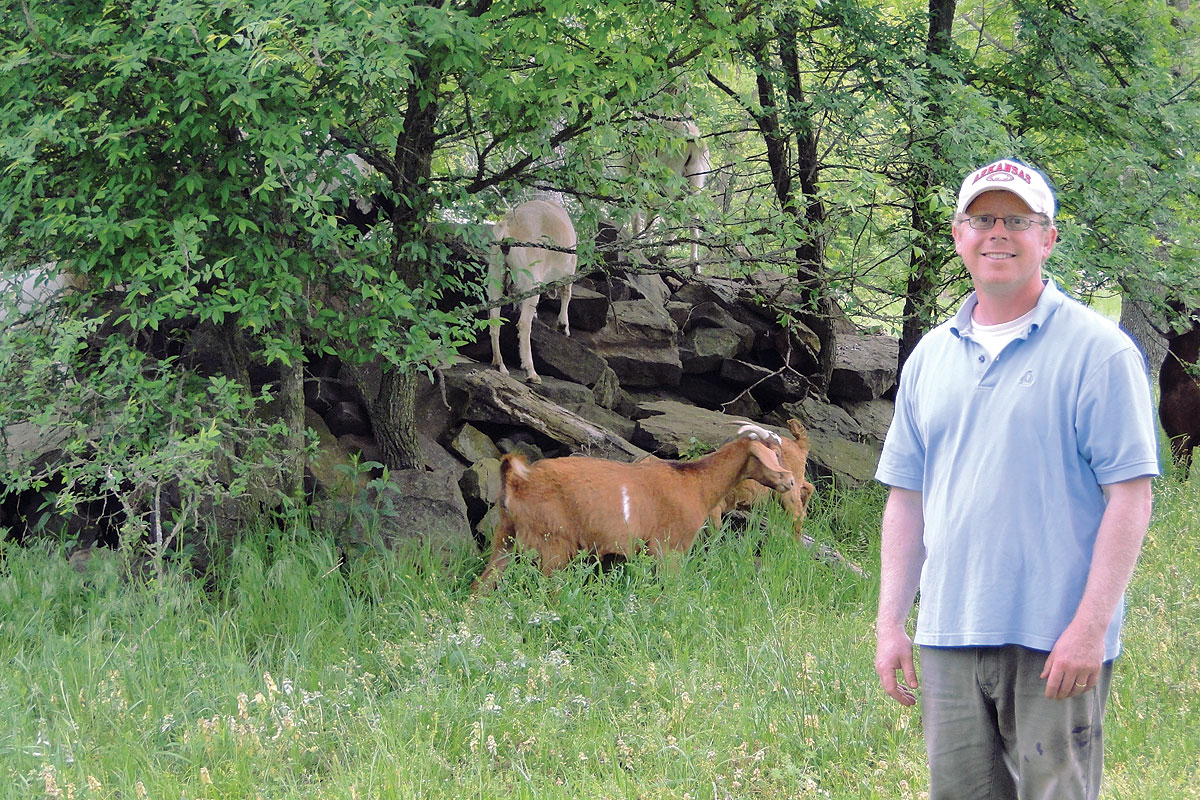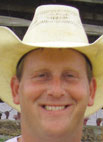
A desire to build a farm prompted a former banker to trade his suits for jeans
One of the most important dynamics in David and Kimberly Mitchell’s relationship is supporting each other’s dreams.
For a number of years David worked in sales and in banking and investment for Arvest in Bella Vista, Ark., while Kimberly taught preschool fitness. David actively supported Kimberly’s dream of becoming a published novelist, and she now has a publication contract for six young adult novels.
One day, David came home declaring he wanted to be a farmer, though neither knew anything about farming and he had no idea he would end up with sheep and goats. His position was fine and their life was good, but the job was routine, 45 minutes away, inside, and definitely not speaking to his heart. From Kimberly’s point of view, he was more than entitled to follow his dream with her full support.
While still working in the banking industry, David began studying farming and the process of deciding what kind of farm he wanted to have. In addition, he was searching for property in Northwest Arkansas to be near his family and University of Arkansas sporting events. Two days after they brought 50 acres in Lincoln, Ark., the couple discovered Kimberly was pregnant so she is now a stay-at-home mom with their infant daughter Abigayle, though she blogs through the Arkansas Women Bloggers and continues her writing.
To aid cash flow, David works part-time at Across the Creek Farms in West Fork.
During his crash course in farming, David came across several sources that led him to a multi-species grazing system with as little human intervention as possible. Extensive human contact is important, however, to keep the animals workable. Part of that contact will include lightly supplementing with sweet feed.
“I love the healing of ecology that this style of farming promotes,” David said.
In December 2015, the couple purchased their acreage in Lincoln. The land was ideal because it had a good house, outbuildings, a nicely constructed pile of rocks for goats to climb on, both well and rural water and sufficient pasture for small ruminants like sheep and goats.
“We were really planning on building our own home, but this all turned out for the best because starting a farm while constructing would’ve been more than we wanted to handle,” David said.
While the house was move-in ready, the rest was not. In January 2017, they purchased their first livestock, 14 bred yearling sheep supported by one ram and 11 bred doelings in addition to one billy, hoping one day contain 100 animals, the number he believes his land can comfortably support.
“I’m not as worried about the market side because the demand for sheep and goats far outweigh the supply,” David explained.
The sheep herd consists of 14 Katahdin cross and Dorper cross yearlings to be bred by a primarily Dorper ram. The goat doelings are mixed with a Boer influence and supported by a Boer-style billy.
“Boer goats are the Angus of the goat world because the dark head and white body sell the best,” David said. “Since Boars get the heaviest the fastest in terms of meat production, I plan on transitioning to Boer billies.”
Since all his females are first-time mothers, they are more likely to have single births with twins more likely next year. Thus far the animals have produced eight lambs, with four or five more births expected, and eight kids, with three more births in the offing. David plans on retaining the females.
“I am expecting a high number of culls and deaths in the beginning as I move toward the hardy, self-sufficient animals I want in my herds,” he said. “Parasite resistance is especially important, and I read that the resistance is very geographically specific with 150 miles far enough away to have different parasites.”
An important part of David’s parasite program is chickens. He has both laying hens and meat birds with a movable coop or chicken trailer to help with the parasitic issue.
For David, the chickens are not well loved but “great on bugs.”
Getting the land to work for David in the way that he wants will take time. He is planning on feeding hay this year and next, by which time he hopes both the land and the hardiness of the animals will reduce supplementing with hay to a bare minimum. One of the reasons the two species work well together is that they each prefer different plants with goats preferring to browse and sheep preferring grass and broadleaf weeds.
Fencing is a high priority. The barbed wire perimeter fencing is not strong enough to hold goats and sheep, and pastures need to be rotated in order to follow David’s management plan. Consequently he uses electric polynet fencing and has one solar charger and one AC charger. He has learned that the solar charger is not really strong enough to contain the goats and sheep and the AC charger works well but has to have a long cord which is cumbersome when moving the fencing daily.
Additional land through ownership or leasing may come much further down the road.






